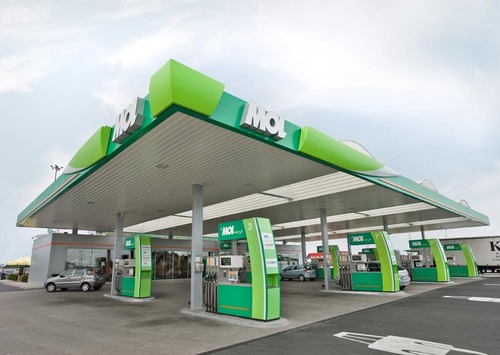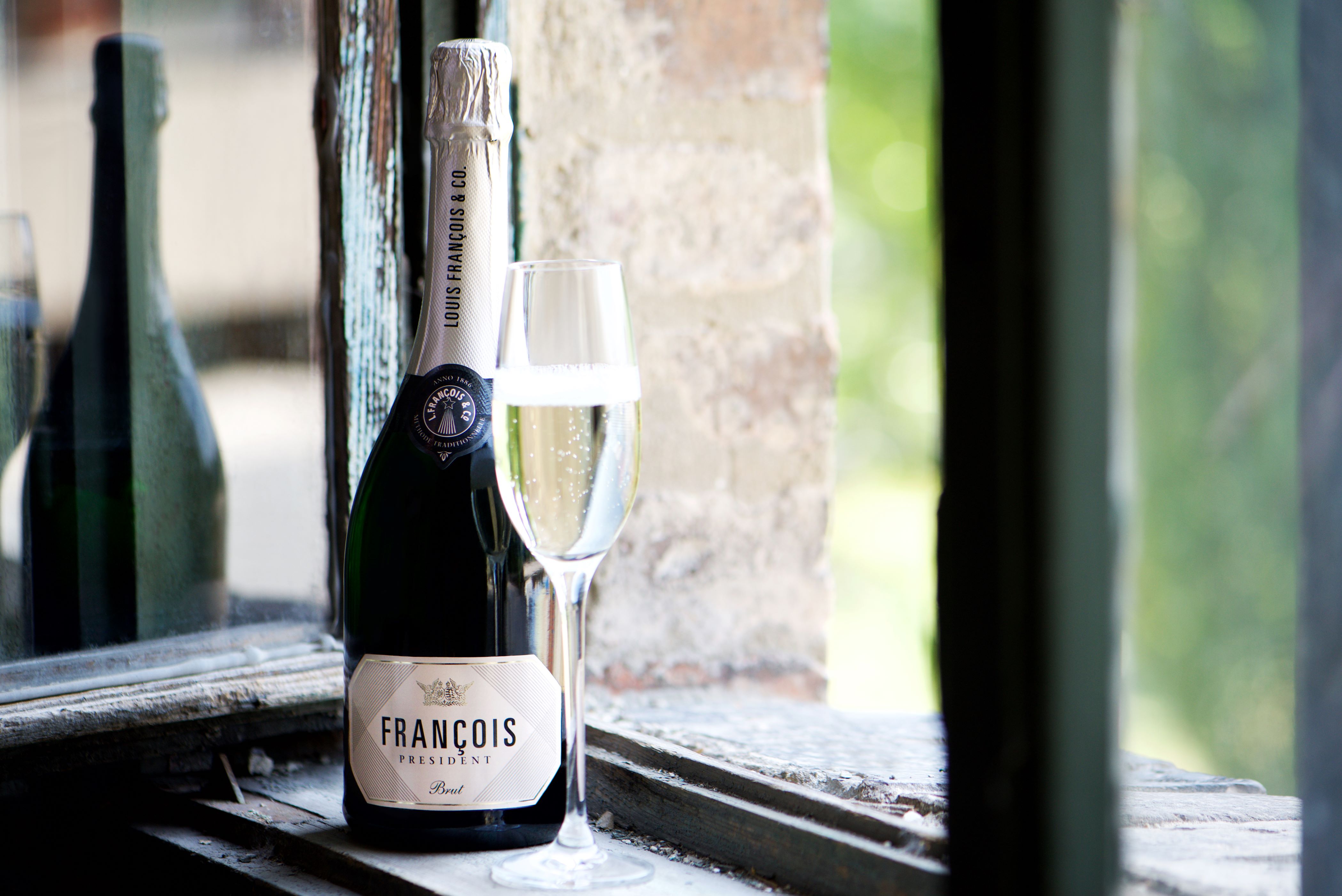Summer Wines can be Complex Too

Although many wine purists look down their noses at it, the rosé revolution has also painted Hungary pink, with many nice Magyar offerings now being made.
Making rosé is no walk in the pink park as the winemaking has to be spot on and precise at every stage. If a mistake is made, then it’s impossible to go back and correct it; the winemaker has to be at the top of his or her game. As such, this makes rosé a suitable test of a winemaker’s talents.
Pannonhalmi Tricollis Rosé 2018 (HUF 2,150), from the winery of Pannonhalma’s Benedictine Abbey, has been nicely crafted by winemaker Zsolt Liptai. It comprises three grapes (50% Merlot, 30% Pinot Noir, 20% Cabernet Franc) from three vineyards, and was made utilizing two rosé methods to excellent effect.
The Pinot Noir grapes was grown with the sole intention of only being used to make rosé and picked early in order to capture acidity and restrained elegance. It was destemmed and given four to five hours on the skins before pressing and was made in much the same way as most white wine is.
The Merlot and Cabernet Franc grapes started as fledgling red wines before being bled off early from the fermenting, giving a rounder, fuller style. The wine was given brief ageing before being blended. This combination of methods has resulted in a wine that exudes ripe raspberry and wild strawberry flavors with good body, depth, structure and refreshing acidity, while the 4.8 g/l of residual sugar gives it a soft landing on the back of the palate.
Liptai has been there since the Pannonhalma Abbey winery was brought back to live in the early 2000s and was recommended by the late, great, internationally active and acclaimed Tibor Gál. He (Gál) was consultant to the project that saw the abbey make wine after a break of half a century due to the collectivization of the former system. (None of the monks possessed the relevant winemaking skills any longer, so they went for Gál’s protégé, Liptai.)
Sándor Méresz (Liptai’s great friend, with whom he attended winemaking school in Gyöngyös) is the winemaker at Etyeki Kúria and makes another of Hungary’s finest rosés. The Etyeki Kúria 2018 rosé (HUF 1,790 from Bortársaság) is a blend of Kékfrankos, from the winery’s Sopron vineyards, and Pinot Noir. Kékfrankos, with its lively acidity and crispy red fruit, is a great grape for making rosé, and this wine is nicely polished off with Pinot’s precision and elegance.
Wild Fermentation
Méresz has also mastered Sauvignon Blanc, and Etyeki Kúria’s Sauvignon Blanc 2018 appears to have already flown off the shelves. For something a little different, try his Etyeki Kúria’s Mérész Sándor Project Wild Fermented Sauvignon Blanc 2018 (HUF 2,950).
While the grapes, which came from three separate limestone-dominated plots, were fermented from wild yeast with half of the grapes receiving skin contact, it still keeps the grape’s varietal notes of green pepper, cut grass and tropical fruit, yet with more creaminess than is typical. The 5% that was aged in new French (Seguin Moreau) barrels gives it a nice rich twist.
Meanwhile, Liptai’s Pannonhalmi Sauvignon Blanc 2018 was made by blending across two vineyards, the cooler Széldomb (literally “windy hill”), which brings crispy acidity, and the warmer Tavaszó, with its juicy tropical notes.
The 15-20 hours of skin contact and the addition of a portion of wine fermented via whole berry fermentation, combined with ageing on fine lees, have given a fuller mouthfeel than usual and an appealing herbaceous character to add to all the usual gooseberry and green fruit goodness.
Despite the Pannonhalma wine region’s relatively cool climate in the northwest of Hungary (although the climate sure appears to be changing), Pannonhalmi makes what is for me one of the most impressive Bordeaux-style blends in Hungary.
The limited-edition Infusio (80% Merlot, 20% Cabernet Franc), the 2016 vintage of which costs HUF 8,250 from abbey website apatsagipinceszet.hu, has a welcome cool, zesty streak cutting through its concentrated and smoky core.
Fruit-forward
Pannonhalmi’s Tricollis Vörös 2018 (HUF 2,790) is a cheaper and more fruit-forward alterative, (Pinot Noir, Merlot and Cabernet Franc) that’s only made in the tank, and is ideal for summer imbibing, and can be chilled a little.
Indeed, full-bodied red wines, with their inky tannins and high alcohol, can be hard to stomach in the summer, but lighter reds can make for delicious drinking. Lighter Kékfrankos and Kadarka can also come into their own as the mercury rises.
Jani Márkvárt’s fresh and ultra-fruity Ezerötös Cuvée 2018 (HUF 1,500 from Bortársaság), a totally tank-made blend of Zweigelt, Kékfrankos and Merlot is made for warm summer evenings. Another good summer option, this time from Eger’s Jani Bolyki, is his Indián Nyár 2016 (a spontaneously fermented blend of Kékfrankos, Portugieser and Blauburger that is aged in used 500-liter barrels and costs HUF 2,350).
Staying in Eger and with the same winemaker, Bolyki Egri Csillag 2018 (HUF 1,750) is a tank-made blend of Királyleányka (a somewhat underrated indigenous variety with fine aromas and good structure), Sauvignon Blanc, Hárslevelű and Riesling from the Középbérc and the Hajdúhegy vineyards. This is a fun, fruity and floral summer white that gives a good deal more than its price suggests.
Another favorite Egri Csillag – Eger’s white wine equivalent of its famous Bikavér red – comes from the cellar of Tibor Gál. The son of the aforementioned late Tibor Gál, he has done a sterling job in bringing the winery back to its former glory. His nickname is Titi, which is tagged onto the name of the winery’s 2018 Egri Csillag Titi (HUF 2,250).
This super blend of Királyleányka, Viognier, Pinot Gris, Tramini, Pinot Blanc, Zenit and Cserszegi fűszeres is usually my go-to Csillag in the classic category, but it has come out a bit fuller, softer and rounder in the warm but balanced 2018 vintage.
SUPPORT THE BUDAPEST BUSINESS JOURNAL
Producing journalism that is worthy of the name is a costly business. For 27 years, the publishers, editors and reporters of the Budapest Business Journal have striven to bring you business news that works, information that you can trust, that is factual, accurate and presented without fear or favor.
Newspaper organizations across the globe have struggled to find a business model that allows them to continue to excel, without compromising their ability to perform. Most recently, some have experimented with the idea of involving their most important stakeholders, their readers.
We would like to offer that same opportunity to our readers. We would like to invite you to help us deliver the quality business journalism you require. Hit our Support the BBJ button and you can choose the how much and how often you send us your contributions.








